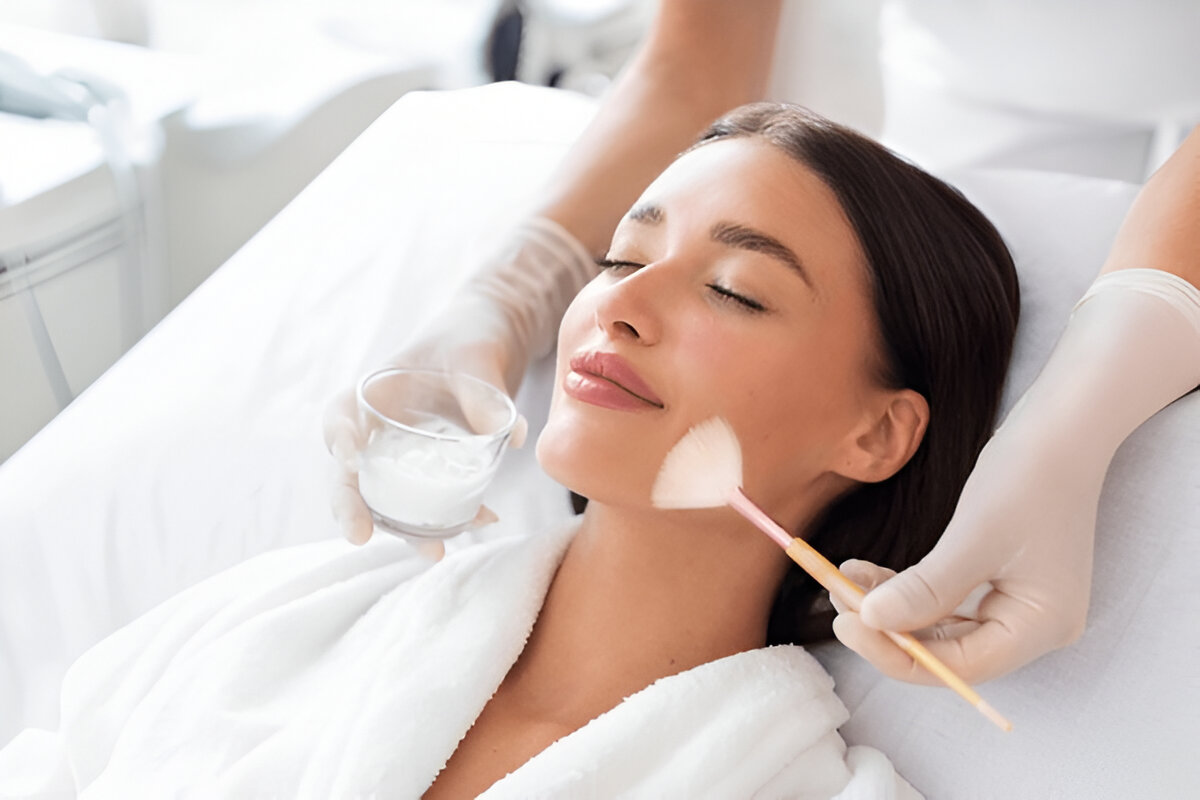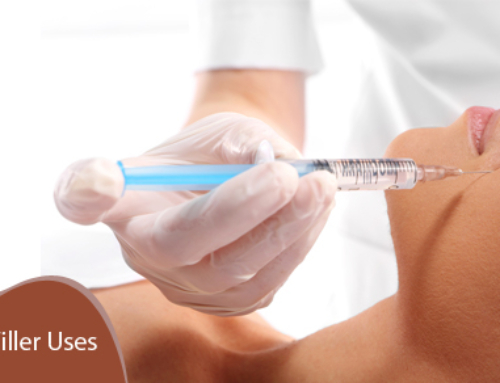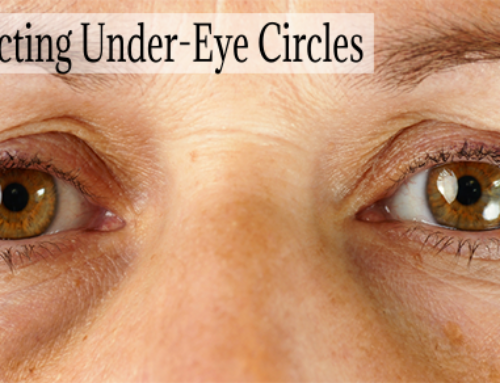The Ultimate Guide to Types of Chemical Peels: Find the Perfect Peel for Your Skin

Chemical peels are a powerful skincare treatment that can reveal fresh, glowing skin by gently removing the damaged outer layers. This specialized procedure uses specific chemical solutions to exfoliate the skin, resulting in improved texture, tone, and overall appearance.
Your skin deserves a customized approach. Every individual’s skin is unique and has its own story – whether it’s sun damage, signs of aging, acne issues, or pigmentation problems. Choosing the right strength and type of chemical peel is crucial for achieving successful results.
Factors to Consider When Choosing a Chemical Peel
Here are some important factors to keep in mind when selecting a chemical peel:
- Your specific skin concerns
- Skin type and sensitivity level
- Previous experiences with treatments
- Desired recovery time
- Professional guidance requirements
At The Centre for Dermatology, our team of expert dermatologists will assess your skin’s needs and create personalized treatment plans tailored specifically for you. We will guide you through the process of selecting the most effective and safe chemical peel that aligns with your skincare goals.
In addition to chemical peels, we also offer other advanced skincare treatments such as:
- CoolSculpting – a revolutionary fat freezing technique that aids in weight loss without the need for exercise or diet
Ready to discover your perfect chemical peel or explore other skincare options? Book a consultation with our specialists to begin your journey toward renewed, glowing skin.
Understanding Chemical Peels
Chemical peels are a game-changing skincare treatment that work by gently removing layers of skin. During the procedure, a specially formulated chemical solution is applied to your skin, causing a controlled reaction that stimulates the natural process of shedding old skin.
The Science Behind Chemical Peels:
- The solution used in the peel breaks down the protein bonds holding dead skin cells together.
- As a result, damaged skin cells loosen and begin to peel off.
- In response, your body produces new skin cells to replace the ones that have been removed.
- This process reveals fresh, rejuvenated skin underneath.
Key Benefits of Chemical Peels:
- Reduced appearance of fine lines and wrinkles
- Improved texture and tone of the skin
- Minimized acne scarring
- Increased collagen production
- Decreased hyperpigmentation
- Refined pore size
Common Misconceptions About Chemical Peels:
❌ “Chemical peels burn your skin”
✓ Chemical peels create controlled exfoliation under professional supervision
❌ “All chemical peels cause intense peeling”
✓ Light peels may not cause visible peeling at all
❌ “Chemical peels are only for facial skin”
✓ Treatments can be performed on neck, chest, hands, and other areas
❌ “One peel will fix all skin concerns”
✓ Multiple sessions may be needed for optimal results
The effectiveness of a chemical peel depends on various factors, including skin type, concerns, and the specific chemicals used. Professional assessment ensures the selection of appropriate peel strength and type for individual skin needs. This is where The Centre for Dermatology comes in, offering expert evaluations to tailor treatments.
In addition to chemical peels, the centre also provides other advanced skincare solutions such as Coolsculpting, a revolutionary non-surgical contouring treatment that freezes away stubborn fat.
Types of Chemical Peels
Chemical peels come in three distinct levels of intensity, each designed to address specific skin concerns and deliver varying degrees of results. Let’s explore these options to help you understand which type might be right for your skin needs.
1. Superficial/Light Chemical Peels
Superficial peels represent the gentlest form of chemical exfoliation, making them an excellent starting point for most skin types. These treatments use mild acids like glycolic or salicylic acid at concentrations between 20-30%.
Key Characteristics:
- Targets the epidermis (outermost layer of skin)
- Minimal downtime (24-48 hours)
- Subtle improvements with each session
- Safe for all skin types and tones
Common Applications:
- Mild acne and blackheads
- Uneven skin tone
- Dull complexion
- Minor texture irregularities
- Surface-level hyperpigmentation
Treatment Protocol:
- Frequency: Every 2-5 weeks
- Series of 4-6 treatments recommended
- Maintenance sessions every 1-2 months
Aftercare Requirements:
- Sun protection (SPF 30 or higher)
- Gentle cleansing for 24 hours
- Moisturizer application
- No exfoliation for 1 week
- Avoid heavy makeup for 24 hours
A superficial peel creates a light frosting effect on the skin, followed by minimal flaking. Results become visible within 3-4 days, revealing brighter, refreshed skin. These peels work progressively, building improvements with each session while maintaining the skin’s natural protective barrier.
The treatment takes approximately 30 minutes, making it perfect for those seeking quick improvements with minimal recovery time. Patients can return to normal activities immediately, though some might experience mild redness similar to a light sunburn.
For more advanced treatments or personalized care, consider consulting a professional like Dr. Mani Raman, a respected authority in cosmetic dermatology. The Centre for Dermatology offers various procedures including superficial chemical peels among other expert dermatological services like body procedures such as coolsculpting, laser hair removal, and SkinTyte.
2. Medium Chemical Peels
Medium chemical peels penetrate deeper into the skin’s layers than superficial peels, utilizing trichloroacetic acid (TCA) at concentrations between 15% and 35%. These peels target the middle layer of skin, making them effective for moderate skin concerns.
Key Characteristics:
- Stronger formulation than superficial peels
- Penetrates into the dermis layer
- Requires professional application
- Results visible after one treatment
Conditions Treated:
- Extensive sun damage
- Deep wrinkles and fine lines
- Age spots and freckles
- Moderate acne scars
- Uneven skin texture
- Melasma
Recovery Process:
- Redness and swelling for 48-72 hours
- Peeling begins around day 3-4
- Complete skin shedding within 5-7 days
- New skin appears pink for several weeks
Post-Peel Care Requirements:
- Strict sun protection (SPF 30+)
- Gentle cleansing with mild products
- Regular moisturizing
- Avoid makeup for 5-7 days
- No strenuous exercise for 2-3 days
Medium chemical peels require 3-9 months between treatments, allowing adequate healing time. Results typically last 6-12 months, depending on sun exposure and skincare routine maintenance.
3. Deep Chemical Peels
Deep chemical peels are the most intensive type of chemical exfoliation treatment. These powerful treatments go deep into the skin using phenol or high-concentration trichloroacetic acid (TCA).
Characteristics of Deep Chemical Peels:
- Penetrates to the lower dermal layer
- Requires sedation or anesthesia
- Treatment duration: 2-3 hours
- Recovery period: 2-3 weeks
- Results last up to 10 years
Ideal Candidates:
- Individuals with severe skin damage
- Deep facial wrinkles
- Significant sun damage
- Precancerous growths
- Severe acne scarring
- Age spots and hyperpigmentation
Essential Safety Considerations:
- Professional medical supervision required
- Pre-treatment screening mandatory
- Not suitable for:
- Dark skin tones
- Sensitive skin
- Heart conditions
- Recent facial surgery
Potential Risks:
- Temporary or permanent changes in skin color
- Risk of scarring
- Infection susceptibility
- Reactivation of cold sores
- Heart irregularities (with phenol peels)
Deep chemical peels require strict adherence to post-treatment care protocols. Patients must follow specific skincare routines, avoid sun exposure, and attend regular follow-up appointments to monitor healing progress. These treatments demand significant commitment but provide dramatic improvements for severe skin issues.
Types of Acids in Chemical Peels
Chemical peels use specific acids to target different skin issues. Each acid has its own unique structure and properties that make it effective for certain skin conditions.
Key Characteristics of Chemical Peel Acids:
- Penetration Level: Different acids reach varying skin depths
- pH Levels: Range from gentle to aggressive formulations
- Molecular Size: Determines how deeply the acid can penetrate
- Skin Affinity: How well the acid interacts with specific skin types
1. Glycolic Peel (Aging Skin Treatment)
Glycolic acid is the smallest alpha-hydroxy acid (AHA) molecule, which allows it to penetrate deep into the layers of the skin. This powerful ingredient offers impressive anti-aging benefits:
Primary Benefits:
- Stimulates collagen production
- Reduces fine lines and wrinkles
- Improves skin texture and tone
- Enhances cellular turnover
Treatment Protocol:
- Concentration ranges from 20% to 70%
- Treatment duration: 5-15 minutes
- Series of 4-6 treatments recommended
- Maintenance sessions every 4-6 weeks
Best Candidates:
- Mature skin showing signs of aging
- Sun-damaged complexions
- Dull, uneven skin tone
- Non-sensitive skin types
Note: Higher concentrations require professional application in a clinical setting to ensure safety and optimal results.
The effectiveness of glycolic peels comes from their ability to break down the bonds between dead skin cells, leading to quick exfoliation and renewal of the skin’s surface. This process triggers the production of new, healthy skin cells and stimulates natural collagen synthesis.
For those looking for alternative or additional treatments for aging skin, Sciton Laser and BELA MD are excellent options available at The Centre for Dermatology. These treatments not only reverse signs of aging but also improve skin elasticity, resulting in a youthful and radiant appearance.
2. Lactic Peel (Sensitive Skin Treatment)
Lactic acid, derived from milk proteins, is a gentle yet effective option for sensitive skin types. This alpha-hydroxy acid (AHA) creates a natural moisturizing effect by drawing water molecules into the skin’s surface.
Key Benefits for Sensitive Skin:
- Maintains optimal skin hydration levels
- Reduces appearance of fine lines without irritation
- Strengthens skin barrier function
- Improves skin texture with minimal redness
The molecular structure of lactic acid makes it less likely to cause irritation compared to other chemical peels. Its larger molecule size means slower penetration into the skin, reducing the risk of adverse reactions.
Ideal Treatment Schedule:
- Initial series: 4-6 treatments
- Frequency: Every 3-4 weeks
- Maintenance: Monthly treatments
A lactic acid peel typically produces a mild tingling sensation rather than burning or stinging. The treatment requires no downtime, making it perfect for those new to chemical peels or with reactive skin conditions.
3. Beta Peel (Salicylic Acid) (Acne Treatment)
Beta peels, powered by salicylic acid, are an innovative solution for acne-prone skin. This oil-soluble acid goes deep into the pores, making it particularly effective for:
- Dissolving excess oil
- Unclogging pores
- Reducing redness and swelling
- Stopping future breakouts
The beta hydroxy acid (BHA) structure of salicylic acid allows it to work beneath the skin’s surface, targeting acne at its source. A typical beta peel contains 15-30% salicylic acid concentration.
Beta peels are great for treating:
- Active acne spots
- Blackheads and whiteheads
- Enlarged pores
- Dark spots left by previous breakouts
These peels can be done every 2-4 weeks, depending on how sensitive your skin is and how severe your acne is. The treatment gently removes dead skin cells without irritating active breakouts.
Note: If you’re allergic to aspirin, you should avoid beta peels since salicylic acid has a similar chemical structure.
While beta peels are effective for treating acne, they may not address other skin concerns such as dark under-eye circles. For such issues, treatments like hyaluronic acid fillers can provide immediate improvement for up to 18 months with just one session. These fillers work by adding volume and hydration to the under-eye area, effectively reducing the appearance of dark circles.
4. Jessner Peel (Hyperpigmentation Treatment)
The Jessner Peel combines three powerful ingredients: 14% salicylic acid, 14% lactic acid, and 14% resorcinol. This triple-action formula creates a medium-depth peel that effectively addresses:
- Stubborn hyperpigmentation
- Post-inflammatory marks
- Deep-set acne scars
- Melasma patches
- Uneven skin texture
The unique composition allows for deeper penetration than single-acid treatments, making it particularly effective for resistant skin concerns. The salicylic acid component unclogs pores, while lactic acid provides hydration, and resorcinol aids in breaking down damaged skin cells.
This peel typically requires 3-5 days of downtime, during which the skin undergoes visible peeling. Results become noticeable after the first treatment, with optimal outcomes achieved through a series of 4-6 sessions spaced 4 weeks apart.
The Jessner solution works exceptionally well on darker skin tones, as its balanced formulation minimizes the risk of post-inflammatory hyperpigmentation – a common concern with other medium-depth peels.
For those with more severe skin issues such as deep-set acne scars or traumatic scars, Profractional lasers could be an excellent alternative. These lasers are known for their effectiveness in removing deep acne scars, chicken pox scars, stretch marks, discoloration, and overall skin tightening.
5. TCA Peel (Trichloroacetic Acid) (Aggressive Treatments)
TCA peels are one of the most powerful chemical treatments available in professional skincare. This aggressive peel goes deep into the skin, making it very effective for:
- Severe sun damage – targeting dark spots and uneven skin tone
- Deep wrinkles – addressing prominent facial lines
- Advanced signs of aging – including sagging skin and texture problems
- Significant scarring – improving the appearance of deep acne scars
The concentration of TCA usually ranges from 15% to 35%, with higher percentages needing medical supervision. One treatment can give dramatic results, but recovery time takes 7-10 days.
Important Safety Notes:
- Only for professional use
- Requires pre-treatment skin preparation
- Not suitable for sensitive or reactive skin types
- May cause temporary darkening of the skin in darker tones
The strength of TCA peels requires careful assessment of the skin and proper care after the treatment. Results can last several months to years, depending on sun protection and skincare maintenance.
For those looking for a more comprehensive approach to skincare, combining TCA peels with other cosmetic treatments offered at professional dermatology centers can yield even better results. These treatments can address various issues such as obesity, sun damage, wrinkles, and fine lines.
Additionally, for those wanting to tackle deep wrinkles or advanced signs of aging, non-surgical facelift procedures using soft tissue fillers could be an excellent complement to the effects of TCA peels.
Moreover, Botox injections have been used for decades and can now be utilized in various medical fields beyond their traditional use, offering surprising benefits that could further enhance your skincare regimen.
At the Centre for Dermatology, we offer a wide range of treatments designed to make you look fresher, younger, and radiant. From managing conditions like rosacea to providing effective solutions for sun damage, our team is equipped to help you achieve your skincare goals.
Lastly, if you’re a regular client at our center, consider joining our Brilliant Distinctions Program. This program offers members the opportunity to receive free cosmetic treatments in the future, making it a valuable addition to your skincare journey.
6. Mandelic Peel (Gentle Exfoliation)
Mandelic acid, derived from bitter almonds, stands out as a gentle yet effective chemical exfoliant. Its larger molecular structure allows for slower penetration into the skin, making it an ideal choice for sensitive and reactive skin types.
Key Benefits of Mandelic Peels:
- Reduces hyperpigmentation and dark spots
- Minimizes the appearance of fine lines
- Controls acne-causing bacteria
- Strengthens skin barrier function
- Suitable for all skin tones, including darker complexions
The gentle nature of mandelic acid creates a balanced exfoliation process that promotes healthy cell turnover without causing significant irritation or redness. This peel works at a gradual pace, allowing the skin to adjust while maintaining its protective barrier.
Recommended Usage:
- Treatment frequency: Every 2-4 weeks
- Concentration levels: 10-40%
- Duration: 5-10 minutes per session
- Best paired with: Hyaluronic acid and niacinamide
Mandelic peels can be integrated into existing skincare routines with minimal downtime, making them an excellent choice for first-time peel users or those seeking consistent, gentle exfoliation.
7. Vitamin C Peel (Complexion Improvement)
Vitamin C peels use the powerful antioxidant properties of ascorbic acid to turn dull, aging skin into a glowing complexion. This brightening treatment:
- Boosts Collagen Production
- Improves skin firmness
- Reduces the appearance of fine lines
- Refines skin texture
- Fights Free Radical Damage
- Shields against environmental stressors
- Prevents premature aging
- Repairs sun-damaged skin
The peel’s gentle yet effective formulation makes it suitable for most skin types. Users typically notice:
- Brighter, more even skin tone
- Reduced dark spots
- Improved skin elasticity
- Smaller-looking pores
For best results, combine Vitamin C peels with a consistent skincare routine that includes sun protection. The treatment can be done every 2-4 weeks, depending on how sensitive your skin is and what results you want. Before your first treatment, it’s a good idea to do a patch test to make sure the peel works well with your skin.







